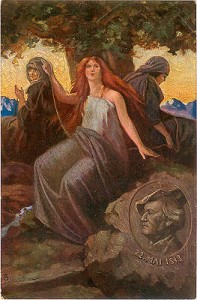[contextly_auto_sidebar id=”OipGQdl5st5HpgJ16uvOZV10yHar99su”]
WE’RE now five years past the launch of Kickstarter, and some culture hounds, a new Telegraph article says, refer to the eras “BK” and “AK” — Before and After Kickstarter. What has it done for arts and culture projects? The story takes stock of the good and bad, and comes down mostly on the good the crowdfunding has done. It’s been especially crucial for independent film. Paul Kendall writes:
Five years into the AK era (the site launched in April 2009), Kickstarter has funded more than 60,000 projects all over the world, from organic food companies and public parks, to photography exhibitions, museums and fashion lines. It has given life to new novels, operas and musicals, a skatepark in Philadelphia, an underwater robot, several mini satellites, and a bizarre product called the Ostrich Pillow that is a godsend to anyone trying to have a power nap on a train, aeroplane or bus, and who doesn’t mind looking ridiculous.
Not surprisingly, since this is the web, a sizeable proportion of the projects that have reached their funding targets are video games and comic books (if a project fails to reach its target within the specified time limit, any pledges that have been made are cancelled and the project gets nothing). But the most popular category is Film & Video, which, so far has hosted just over 35,000 proposals, and seen almost 14,000 reach their goal.
This story, which includes an interview with co-founder Yancey Strickler, is wide-ranging and intelligent, and I don’t entirely disagree with it. Kickstarter has made some valuable projects happen; we are better with it than without it. There are darker sides to crowdfunding though — the way wealthy celebrities have jacked the system, the popularity-contest version of it, the pivot by some that since the market works so well, we don’t need an NEA or NEH or similar sources of culture funding.
I look forward to a piece that investigates these ideas more thoroughly.
ALSO: The age-old debate about performers and appearance — in this case, opera and a singer’s weight — is raging again, in part because of some revie ws from Glyndbourne. Ann Midgette of the Washington Post is writing the best stuff I know on the subject right now. From one of several pieces:
ws from Glyndbourne. Ann Midgette of the Washington Post is writing the best stuff I know on the subject right now. From one of several pieces:
Opera remains the only entertainment field where these issues come up quite so regularly (remember the flap about Deborah Voigt and the little black dress?), because it’s the entertainment field with the largest number of larger body types. They do emerge in other media as well. One recent example was an episode of the TV sitcom “Louie” in which the comedian Louis C.K., a heavy-set, middle-aged man, meets a woman who seems perfect for him — except that she, too, is heavy. The female character calls him on his hypocrisy, talking openly about society’s double standard about “the fat girl” in a scene that represents a rare and welcome burst of public candor about this topic. It’s especially refreshing because it focuses on the issues.
FINALLY: There is a sharp and persuasive rant by my old colleague Don Shirley, on LAObserved, about the plays and shows put on at the Center Theater Company in Los Angeles. Why no plays that try to take stock of LA?” The last time Center Theatre Group consistently helped forge dramatic works in this sphere was in the Gordon Davidson era of the early 1990s, when CTG played a critical role in the creation of The Kentucky Cycle, Angels in America and Twilight: Los Angeles 1992. “

Hard to believe Ann Midgette is the best writer on any topic whatsoever.
The issue here is about credible casting. Octavian (the character in question) is a young man who disguises himself as a girl, to get himself out of a tricky situation. He’s so successful as a beautiful girl that he attracts the unwanted sexual attentions of Baron Ochs. If that attraction is laughable, the opera fails.
Opera is theatre. End of.
Ann Midgette is an amazing, wonderful writer. Everything about Baron Ochs is laughable. He is attracted to anything that moves.